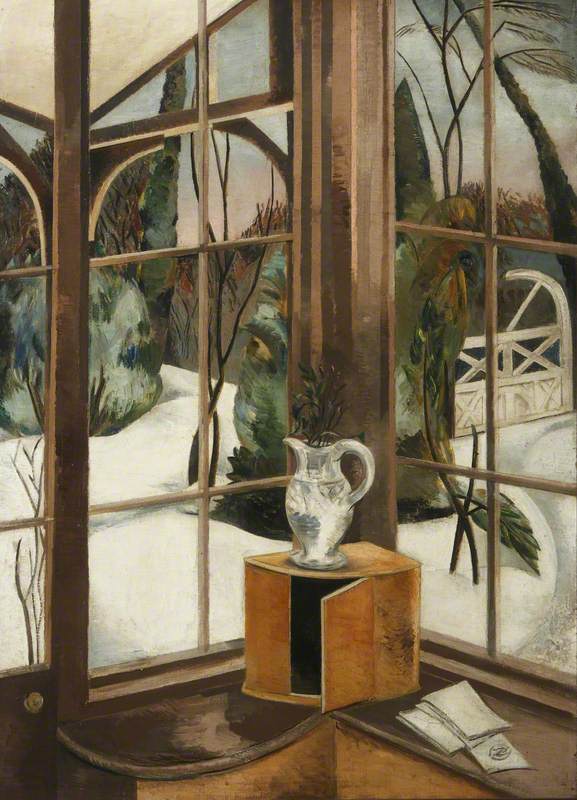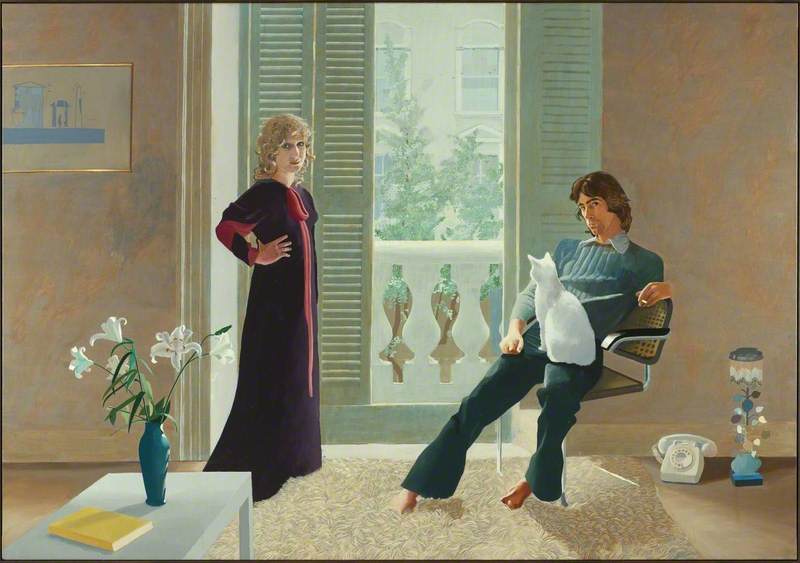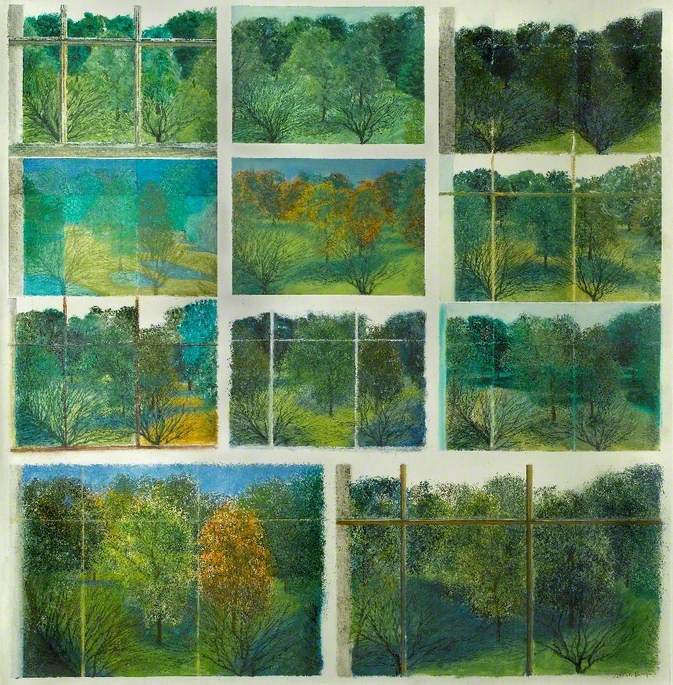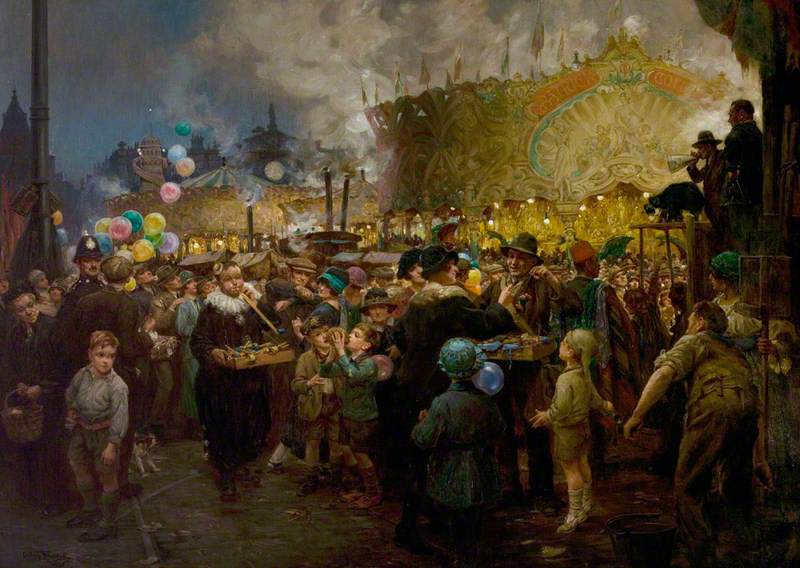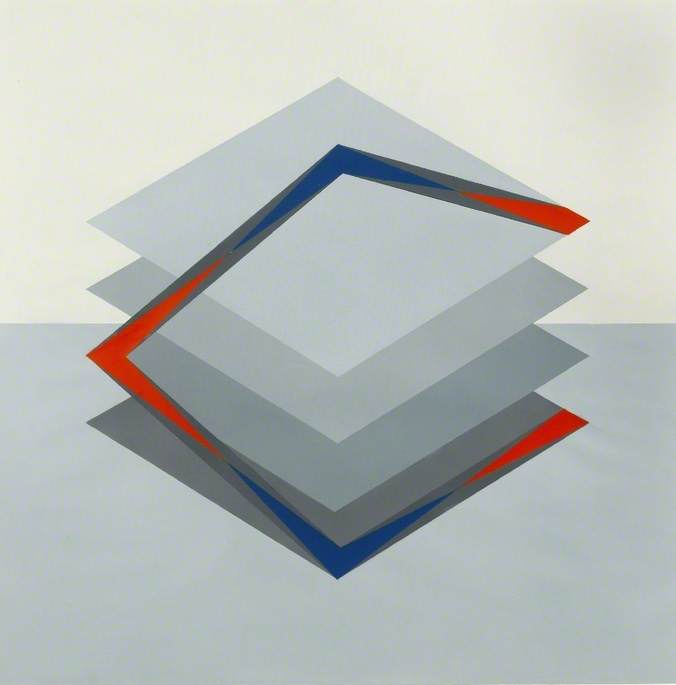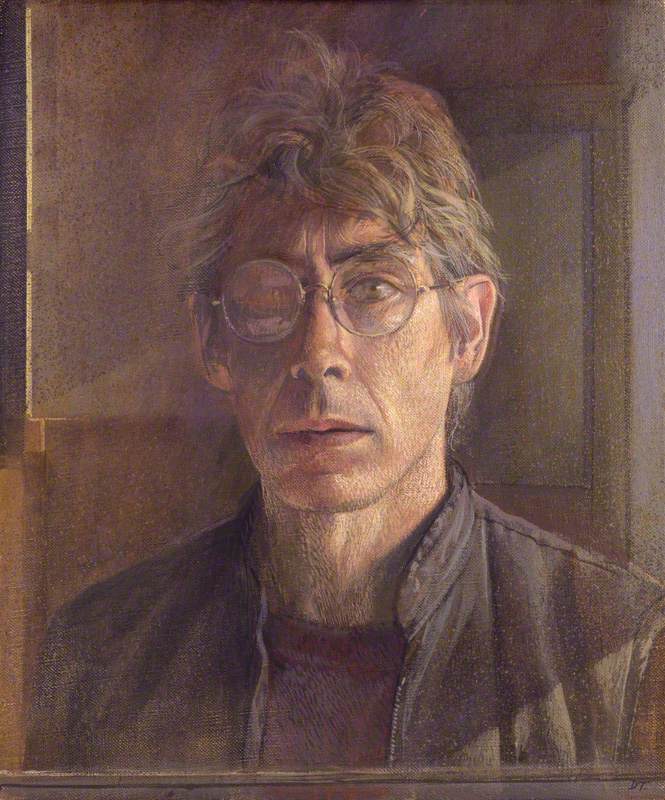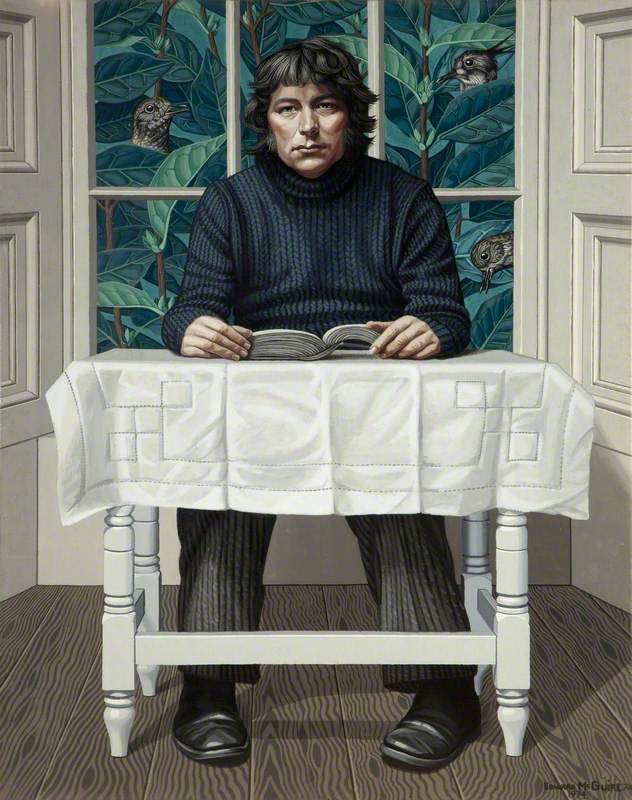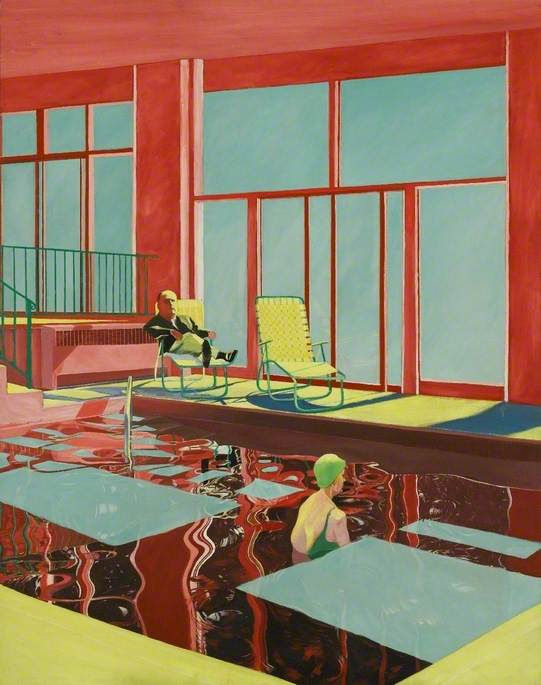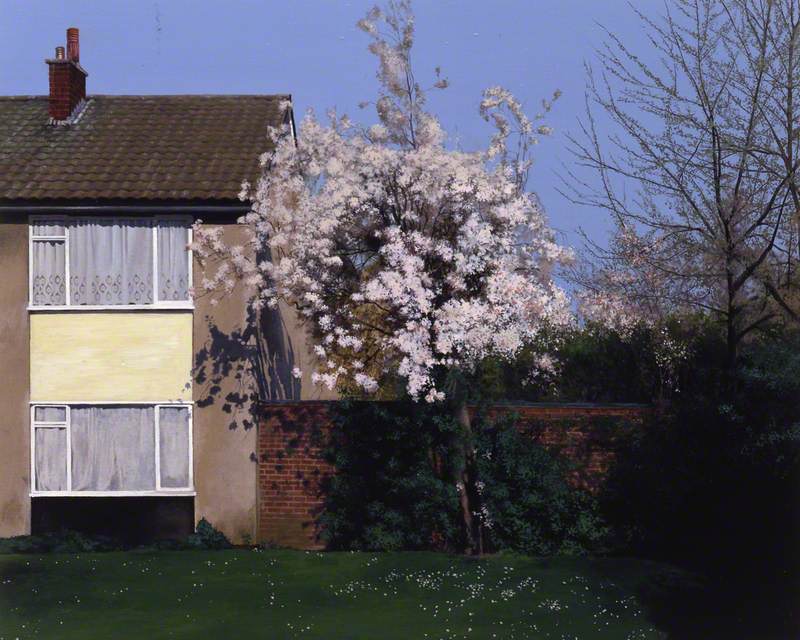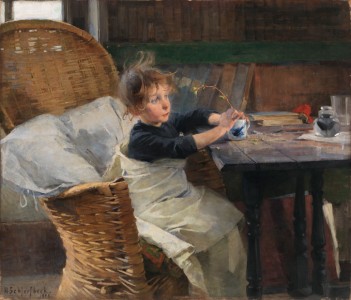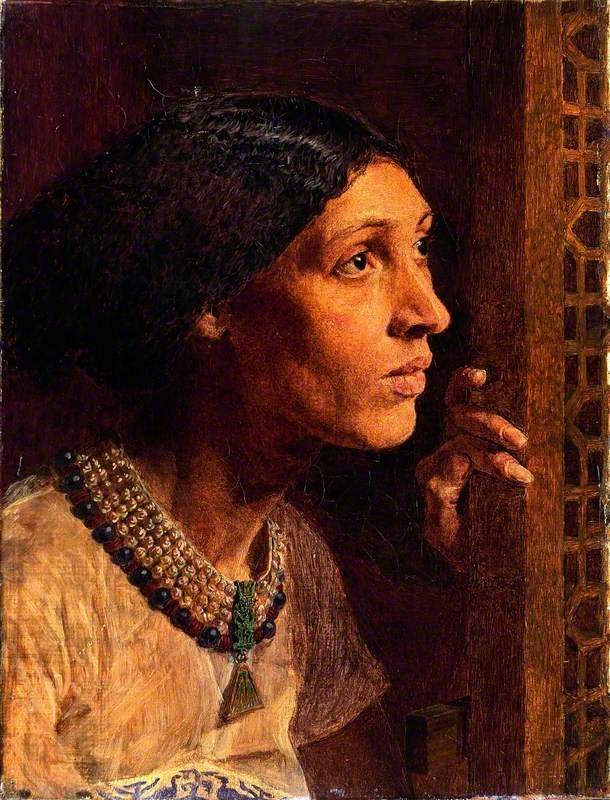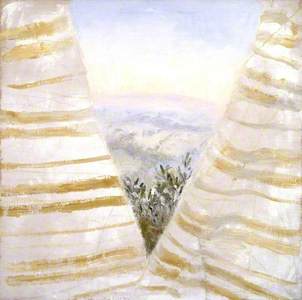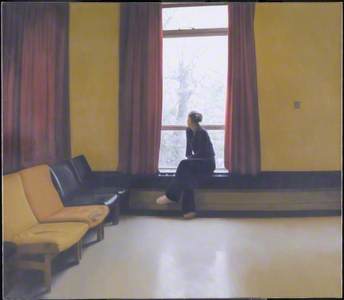The job description of a painter should probably include staring out of windows. In the fifteenth century, Leon Battista Alberti described painting – with elegant circularity – as transforming a surface into ‘an open window through which I see what I want to paint’. So even when not staring out of windows artists are often, in that sense, staring into them, or conjuring them, or doing something in between. I noticed recently the recurrence of windows in some of my work, too, and it was this realisation that led me once more down the Art UK rabbit hole to look through (and at) paintings of windows.
Depicting a window on a painted surface, itself already conceptualised as a window, is a gesture loaded with structural resonances.
The preponderance of painted windows is as remarkable as their diversity: sometimes they contain an interior with a rigid grid, and sometimes they launch the viewer into another space. Sometimes they are disclaimers about the illusionism of a painting, and sometimes they layer fictions, disclaiming the illusion of everything else in order to destabilise images more profoundly. Such open possibilities make windows seductive for painters, to the point where some seem incapable of passing a window without painting it.
Paul Nash had this affliction: seven of his paintings with windows are now on Art UK alone; many feature a slightly mournful plant stuck indoors like an animal in a cage. The Window, Iver Heath shows one such plant on a windowsill. Its diminutive scale and near-invisibility make the plant pathetic, while other parts of the painting complicate the border between interior and exterior. The bars of the window are a barrier, but the open door of a cupboard beneath the plant suggests an exit. Visual similarities between the window’s bars and the garden’s tree branches make what is inside and what is outside altogether more uncertain.
Evelyn Gibbs’s The Nottingham Window shows the scene from her studio on Houndsgate, an area I know well (I grew up in Nottingham, although I associate Houndsgate principally with a convenient side-entrance to a vast WHSmith, now gone). The view from her studio is of more windows, multiplied by reflections on the wet streets below. It is a peculiarly refreshing painting – the window is wide open despite it being a wet day, and opposite is a just-about-legible 'Shipstones' sign marking out the facing building as a pub. Even with reference to a local brewer, and Gibbs’s green-blue, overcast palette, the painting transforms Nottingham momentarily into Venice.
Perhaps the painter most consistently preoccupied with windows was Winifred Nicholson. Nicholson’s Violas in a Window hangs in the Nottingham Castle Museum and Art Gallery, close to Gibbs’s picture. So prodigious was Nicholson’s treatment of windows that she created a vocabulary for denoting them even by their absence, through a mere sill or, perhaps most brilliantly, curtains.
Glimpse Upon Waking is a remarkable late example where curtains frame a segment of dawn and communicate the presence of a window – with amazing economy – through a few horizontal stripes. Nicholson’s inside and outside spaces always exist in the same register of tone and marks, but windows also lend themselves to painting different orders of tone in the same image. Hockney’s Mr and Mrs Clark and Percy, for example, whites-out the exterior beyond the balustrades. Similarly, Paul Winstanley’s Woman at a Window 2 overexposes the scene outside.
Window artists sometimes deploy temporal as well as formal layering: Adrian Berg did this especially dramatically in Regent’s Park. The view was his constant muse, but this painting expands the grid of the window to create a grid of girds. Different seasons sit cheek by jowl, flattening time through the grid’s repetition in a way more typically associated with abstraction. Rosalind Krauss famously elucidated the grid, especially in its abstract iterations, but Berg’s painting makes clear how the window can smuggle the grid into figuration, too.
Depicting a window on a painted surface, itself already conceptualised as a window, is a gesture loaded with structural resonances. Looking at paintings of windows on a computer screen, I inevitably find myself reflecting on the screen’s contribution to all of this, making the layering of imagery even more vertiginous – looking through a computer screen/window at painting/windows of actual (or imagined) windows. Regardless of context, the window is an image that does a lot of heavy lifting. The window’s rectilinear frame and grid are reminders that all images are abstract, while its suggestion of space outside demonstrates that paintings are, among other things, a means of transport between real and depicted worlds.
Alexander Massouras, artist and critic

